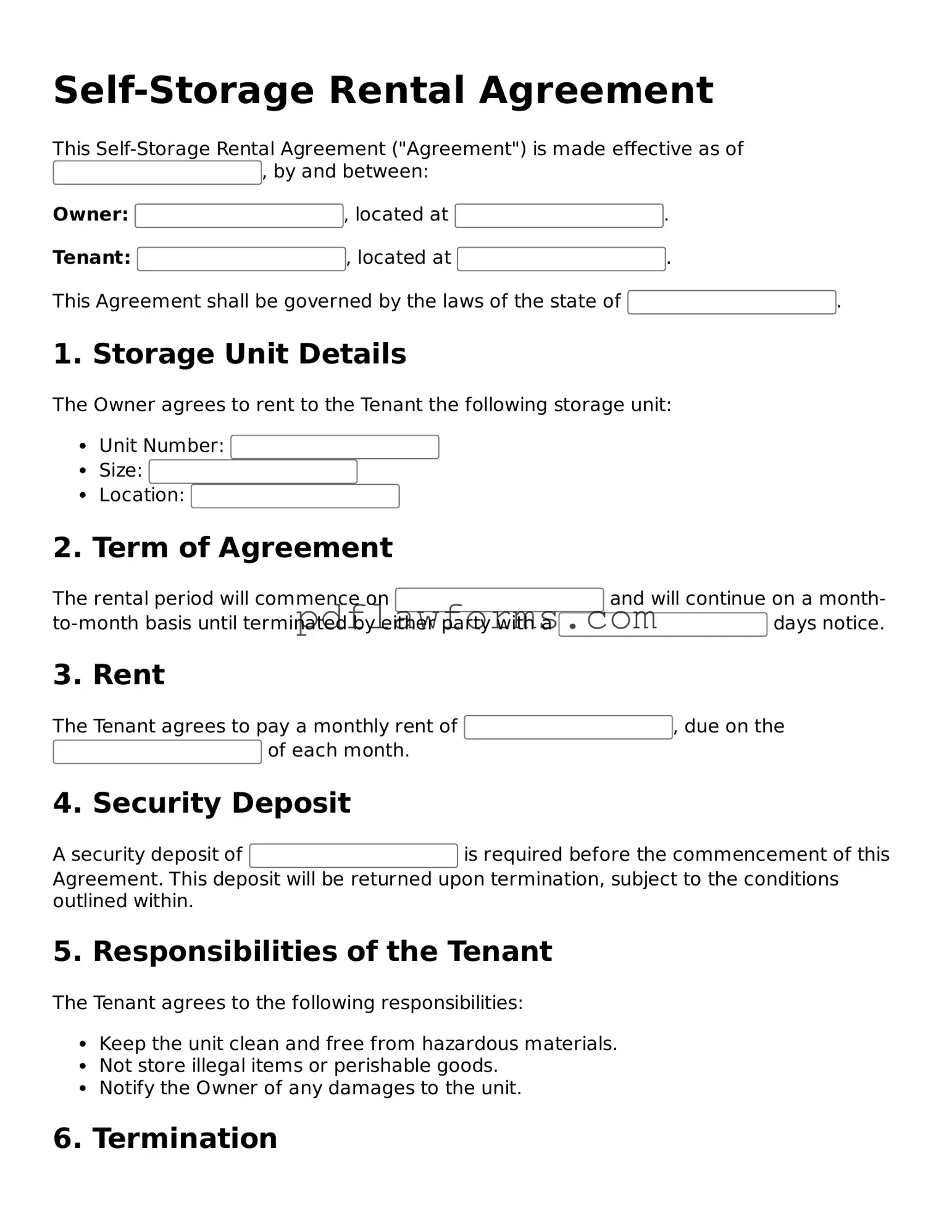Filling out a Self-Storage Rental Agreement form can seem straightforward, yet many individuals encounter common pitfalls that can lead to complications later. One frequent mistake is failing to read the entire agreement before signing. This oversight can result in misunderstandings regarding terms and conditions, including payment schedules and access hours.
Another common error involves providing inaccurate personal information. When individuals enter incorrect names, addresses, or contact numbers, it can create issues with communication and billing. It is essential to double-check that all information is accurate to avoid future problems.
People often overlook the importance of clearly indicating the rental duration. Whether it’s a month-to-month agreement or a longer-term rental, specifying this detail is crucial. Failure to do so may lead to unintended charges or misunderstandings about when the rental period begins and ends.
In addition, some renters neglect to clarify the payment methods accepted by the storage facility. Not all facilities accept the same forms of payment, so it’s beneficial to confirm this information beforehand. This can prevent delays in securing the storage unit or incurring late fees.
Another mistake occurs when individuals do not fully understand the insurance requirements. Many storage facilities require renters to have insurance for their belongings. Not inquiring about this aspect can leave items unprotected and lead to financial loss in case of damage or theft.
Additionally, some individuals fail to ask about access restrictions. Many facilities have specific hours during which renters can access their units. Not being aware of these restrictions can lead to frustration and inconvenience.
People sometimes forget to inquire about additional fees that may not be immediately apparent. Charges for late payments, lock replacements, or administrative fees can add up. Understanding the complete fee structure helps in budgeting effectively.
Another mistake is not documenting the condition of the unit upon rental. Taking photos or notes of any pre-existing damage can provide protection against disputes when vacating the unit. Without this documentation, renters may be held responsible for damages they did not cause.
Finally, many individuals neglect to keep a copy of the signed agreement for their records. Having a copy is vital for reference throughout the rental period. It ensures that both parties are clear on the terms and can help resolve any issues that may arise.
